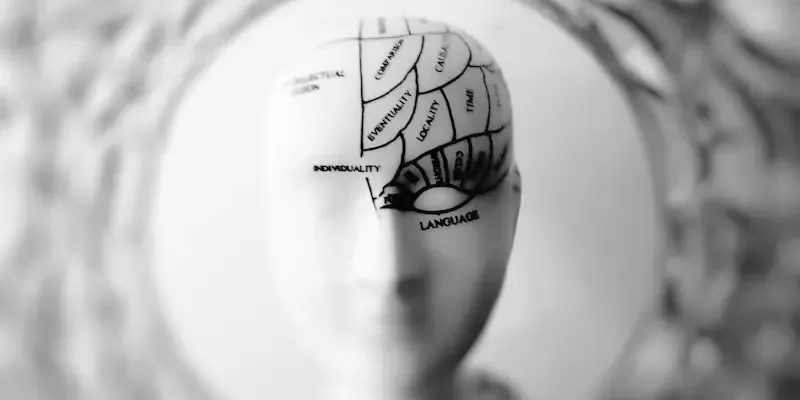Schema Therapy in Practice: 12 Worksheets & Techniques
 Schema Therapy promises to help clients deal with psychological problems that have failed to respond to Cognitive-Behavioral Therapy (CBT).
Schema Therapy promises to help clients deal with psychological problems that have failed to respond to Cognitive-Behavioral Therapy (CBT).
The treatment aims to reduce symptoms and create a high-quality, satisfying life (Arntz & Jacob, 2013).
Central to the therapy is the idea of healing early maladaptive schemas, formed during childhood, that play a crucial role in shaping our thinking in later life and the possible formation of mental disorders (Young, Klosko, & Weishaar, 2007).
This article introduces several techniques, worksheets, and tools to support healing, nurture, and growth with your clients.
Before you continue, we thought you might like to download our three Positive Psychology Exercises for free. These science-based exercises explore fundamental aspects of positive psychology, including strengths, values, and self-compassion, and will give you the tools to enhance the wellbeing of your clients, students, or employees.
This Article Contains:
7 Effective Techniques
Early maladaptive schemas (EMSs) are “pervasive life patterns which influence cognitions, emotions, memories, social perceptions, and interaction and behavior patterns” (Arntz & Jacob, 2013).
According to Schema Therapy (ST), EMSs are typically formed during early childhood in response to traumatic and unpleasant events. They contain psychological and emotional components, shaping our perception and psychological experiences throughout our lives (Kopf-Beck et al., 2020).
The goal of ST is to increase the client’s psychological awareness and help them gain control over their thinking and behavior (Young et al., 2007).
The process, known as schema healing, includes:
- Modifying the EMSs
- Fulfilling unmet core emotional needs
ST offers many cognitive, emotion-focused, and behavioral interventions that facilitate the healing and transformation of active schemas (schema modes).
Some of the tools and techniques are listed below (Arntz & Jacob, 2013):
1. Case conceptualization
At the start of therapy, the therapist develops a case concept to capture patient problems, symptoms, interpersonal patterns, and problematic emotions.
Understanding and analyzing the client’s case helps recognize existing triggers and coping mechanisms and increases awareness of how such problems can be resolved (Arntz & Jacob, 2013).
2. Cognitive interventions and techniques
Cognitive interventions are used to test the validity of schemas and modes and typically involve discussions of the pros and cons of client behavior, including coping mechanisms such as overcompensating, avoidance, and surrender (Arntz & Jacob, 2013).
Other steps may include data collection, reframing and reattribution, schema flashcards and diaries, and schema dialogues.
3. Chair dialogues
Emotion-focused interventions are particularly effective at helping clients express their rage and sadness and focus on their needs and goals (Arntz & Jacob, 2013).
If successful, the client’s self-perception will change, and they will see themselves in a more positive light.
The ST process known as chair work is especially valuable.
During chair dialogues, chairs represent multiple aspects of the patient. Clients are helped to engage with anger or other feelings by attributing each chair to a different schema mode, such as an enraged child or punitive parent (Young et al., 2007).
4. Guided imagery
Guided imagery is a practical approach for both assessment and intervention in ST.
Diagnostic imagery helps the client understand the origins of existing emotional problems and dysfunctional behavior patterns and thinking (Young et al., 2007).
While imagery can access past childhood experiences, it can also focus on current and future situations, replacing negative emotions with positive ones (Arntz & Jacob, 2013).
During imagery, schemas and modes are activated through deeply engaging with existing emotions and the biographical memories upon which they are based. Trauma is rescripted and reimagined, meeting the needs of the badly treated child.
5. Behavioral intervention techniques
Behavioral therapy techniques are used to break behavioral patterns and transform outcomes (Arntz & Jacob, 2013).
The therapist’s tools and techniques include behavioral homework, flashcards, rewarding adaptive behavior, and the rehearsal of adaptive behavior in imagery or role-play.
6. Empathic confrontation
Empathic confrontation is vital for successful ST. The client is confronted with “interpersonal patterns” empathically as part of the therapeutic relationship (Arntz & Jacob, 2013).
The therapist has the delicate and difficult task of challenging the client regarding their maladaptive behaviors and cognitions and clearly conveying their self-defeating nature.
7. Limited reparenting
The therapist provides limited parenting (within professional guidelines) to recognize, articulate, validate, and help fulfill the client’s needs.
For example, patients with severe emotional disorders may need an attachment figure, offering limited emotional support, in order for healing to begin (Arntz & Jacob, 2013).
6 Schema Therapy Worksheets and Workbooks

It is essential to help the client understand the process behind ST and, in particular, the terms and definitions. This is vital before attempting to embark on therapy and assigning worksheets to the client.
Use the list of concepts found in the Schemas, Needs, and Modes Reference Sheet to engage in conversation and explain the ST model to the client.
Schema healing, while essential to ST, is not easy, yet several tools and techniques can help the process (Young et al., 2007; Jacob & Arntz, 2013).
1. Explore maladaptive modes
During the analysis stage of the treatment, it is important to understand the maladaptive modes experienced by the client.
Use Explore Maladaptive Modes to help the client better understand their active schemas (schema modes) and start looking back at their childhood to understand their origins.
2. Schema triggering and mode analysis logbook
Once the client is comfortable with the concepts behind the therapy, the Schema Triggering and Mode Analysis Logbook can be used to capture and analyze schema triggers and identify the existing active schemas (schema modes).
Completing such a workbook and working through the answers in an ST therapy session can increase the client’s psychological awareness of their triggers, schemas, and alternative responses.
3. Behavioral pattern breaking
When the therapist thinks the client is ready to do so, they will shift the treatment focus to behavioral pattern breaking (Young et al., 2007).
By this time, the client should be able to label their early maladaptive schemas, understand when they are triggered, be aware of their childhood origins, and understand how to defeat such schemas using their healthy adult mode. The latter is more typically activated in psychologically healthy people (whose core emotional needs have been met) and moderates and heals dysfunctional modes.
Use the Behavioral Pattern Breaking worksheet to help the client focus on tasks they expect will cause them distress. This could be based on prior experience. The client can compare expected versus actual distress scores and use their healthy adult mode to engage in positive dialogue.
4. Explore coping modes
There are three maladaptive coping styles that we typically engage in (sometimes more than one at a time), often unconsciously (Young et al., 2007):
- Overcompensation
Fighting against the schema by thinking, feeling, and behaving as though the opposite is true - Avoidance
Arranging our lives in such a way that the schema is never activated - Surrender
Rather than trying to fight or avoid it, yielding to the schema
Yet, ultimately, such coping styles imprison us in our schemas.
By recognizing our coping responses, we can replace them, move forward, and live more fulfilling lives (Young et al., 2007).
Once the therapist has helped the client become familiar with their coping modes, use the Explore Coping Modes worksheet to capture when they happen, what emotional needs underlie them, and the early warning signs that hint at their onset.
5. Schema Diary
While similar to the schema flashcard, the schema diary is a little more advanced and useful later in treatment when the client is more comfortable with the terms. The Schema Diary worksheet captures:
- Trigger events
- Emotions
- Thoughts
- Actual behaviors
- Schemas
- Healthy views
- Realistic concerns
- Overreactions
- Healthy behaviors
The therapist asks the client to carry the diary with them and complete it when a schema is triggered.
The form helps them work through the situation and arrive at a healthy solution outside or inside therapy (Young et al., 2007).
A Look at Using Flashcards
Written materials are incredibly helpful in implementing change in everyday life (Arntz & Jacob, 2013).
Schema flashcards are valuable in “summarizing patients’ everyday experiences in terms of schema modes and their cognitive and emotional implications” (Arntz & Jacob, 2013).
Try completing the Schema Therapy Flash Card with your client to identify and implement more functional coping and behavior.
Clients can use flashcards when preparing for a potentially tricky event or situation to remind themselves of the value of behavior change and reduce the urge to revert to prior maladaptive behavior (Young et al., 2007).
3 Exercises for Your Sessions

1. Validating the client’s schema modes
A client’s schema modes refer to their “moment-to-moment emotional, cognitive, physiological states and coping responses” (Kopf-Beck et al., 2020).
Early on in ST, the client must develop an understanding of their mode model and its implications for treatment (Arntz & Jacob, 2013).
Based on your initial assessment of the client, including the problem and behavioral analysis, and using the Schemas, Needs, and Modes Reference Sheet, talk through the client’s mode model to validate their negative behavior and coping mechanisms.
If the client’s views differ, use this opportunity to discuss and clarify their perception of their emotional needs, schemas, and modes. Ongoing dialogue can help improve the client’s understanding of ST and awareness of their emotions and needs, and foster an improved bond between client and therapist.
2. Letters to significant others
Letter writing can serve as a powerful experiential technique (Young et al., 2007).
The therapist assigns clients homework to write letters to their parents and other significant people who hurt them in their childhood.
Such letters are rarely sent to the person addressed; instead, clients bring them to their next session and read them aloud.
The client can use the letter to summarize what they have learned from their cognitive and experiential work during therapy, including (Young et al., 2007; Prasko et al., 2012):
- What their parent did or didn’t do
- What was damaging during childhood
- How they felt
- What they wished for at the time from the parent
- What they want from the parent now
3. Imagery work for reparenting
Imagery can be a powerful technique for helping clients “push through their coping styles of avoidance and overcompensation to discover alternative ways of relating” (Young et al., 2007).
Clients are asked to imagine behaving in healthy ways, rather than slipping back into their old, negative behaviors and coping styles.
Young et al. (2007) provide the example of a young man raised by an abusive mother who wishes to form an intimate relationship with a woman. The therapist asks him to imagine being around single women and to start a dialogue between his mistrust/abuse and defectiveness schemas (telling him to leave) and his healthy adult schema (telling him to stay).
The young man is then asked to form an image of himself breaking through his avoidance and staying in the situation.
Ask your client to imagine a situation that they typically struggle with or one that is approaching. Work through it in as much detail as possible, and ultimately have the client picture themselves overcoming their negative coping strategies.
Interesting Podcasts
There are some excellent podcasts that discuss ST. Here are a few prominent examples:
- In an episode of the Let’s Talk About CBT podcast, the show’s hosts speak to Dr. Lucy Maddox for an engaging interview about Schema Therapy.
- Schema Therapy Training Australia hosts a series of podcast episodes to discuss Schema Therapy with accredited therapists and Jeffrey Young (the creator of ST) himself.
- The Wise Counsel podcast also offers an interview with Young to delve into the ST model and the detail underneath.
- The Good Mood Clinic podcast provides a series of fascinating and insightful episodes based on Schema Therapy and its application.
Further Reading: PositivePsychology.com’s Resources
First, we strongly recommend reading these related Schema Therapy articles for more in-depth guidance:
- Training in Schema Therapy: 14 Courses and Online Options
- 17 Schema Therapy Books for Improving Your Therapeutic Skills
- Schema Therapy For Practitioners: 7 Questionnaires and Tests
If you’re looking for more science-based ways to help others enhance their wellbeing, this signature collection contains 17 validated positive psychology tools for practitioners. Use them to help others flourish and thrive.
A Take-Home Message
Schema Therapy is not an easy treatment. It involves hard work, with both the therapist and the client fully engaged in understanding active patterns of thinking, their origins, and their emotional needs.
Once the analysis phase is over, both actively work together to transform schemas and ensure core emotional needs are met.
Early maladaptive schemas, while nothing more than patterns of thinking, play a critical role in developing and maintaining mental disorders.
The treatment must find ways to heal these maladaptive schemas and remove power from the associated memories, maladaptive cognitions, and bodily sensations.
The tools, worksheets, and techniques within this article provide practical and pragmatic ways of working through Schema Therapy with a client with the ultimate goals of healing, growth, and restoring mental health and physical balance.
We hope you enjoyed reading this article. Don’t forget to download our three Positive Psychology Exercises for free.
- Arntz, A., & Jacob, G. (2013). Schema therapy in practice: An introductory guide to the schema mode approach. John Wiley & Sons.
- Jacob, G. A., & Arntz, A. (2013). Schema therapy for personality disorders—A review. International Journal of Cognitive Therapy, 6(2), 171–185.
- Kopf-Beck, J., Zimmermann, P., Egli, S., Rein, M., Kappelmann, N., Fietz, J., … Keck, M. E. (2020). Schema therapy versus cognitive behavioral therapy versus individual supportive therapy for depression in an inpatient and day clinic setting: Study protocol of the OPTIMA-RCT. BMC Psychiatry, 20(1), 506.
- Prasko, J., Diveky, T., Kamaradova, D., Sandoval, A., Jelenova, D., Vrbova, K., … Vyskocilova, J. (2012). P-1165 – Therapeutic letters – changing the emotional schemas using writing letters to significant caregivers. European Psychiatry, 27, 1.
- Young, J. E., Klosko, J. S., & Weishaar, M. E. (2007). Schema therapy: A practitioner’s guide. Guilford Press.
Let us know your thoughts
Read other articles by their category
- Body & Brain (42)
- Coaching & Application (56)
- Compassion (26)
- Counseling (50)
- Emotional Intelligence (24)
- Gratitude (18)
- Grief & Bereavement (21)
- Happiness & SWB (39)
- Meaning & Values (25)
- Meditation (20)
- Mindfulness (44)
- Motivation & Goals (43)
- Optimism & Mindset (32)
- Positive CBT (25)
- Positive Communication (20)
- Positive Education (44)
- Positive Emotions (30)
- Positive Leadership (13)
- Positive Psychology (32)
- Positive Workplace (33)
- Productivity (16)
- Relationships (42)
- Resilience & Coping (34)
- Self Awareness (20)
- Self Esteem (36)
- Software & Apps (22)
- Strengths & Virtues (30)
- Stress & Burnout Prevention (33)
- Theory & Books (44)
- Therapy Exercises (35)
- Types of Therapy (58)



What our readers think
What is the current scientific and experiential criticism of the schema therapy? I’m just starting it as a patient and would like to look at this modality objectively. Thanks!
Hi Sasha,
Schema therapy is definitely growing in popularity and is thus being examined more from a scientific perspective. You’ll find a complete review of the scientific evidence for this in the following review by Masley et al. (2011): https://doi.org/10.1080/16506073.2011.614274
Hope this helps!
– Nicole | Community Manager
Thank you Nicole!
I want proper certification for Schema Therapy
Please guide
Good day Rabia,
Glad to know you are interested in getting qualified in Schema Therapy. You can read all about it in our related article: Training in Schema Therapy: 14 Courses and Online Options
I trust this helps!
Hi Jeremy,
I just wanted to say thank you for writing this article. I am a forensic psychology DForenPsy/MSc student, and Schema Therapy has been one that has interested me for a while. I was just wondering how long roughly ST lasts i.e., number of sessions, how many sessions, over what timeframe? Obviously it is dependent on the individual, how engaged they are and how well they respond, but is it normally quite a long process?
Kind Regards,
Anna
Hi Anna,
Glad you enjoyed the article! Schema therapy is generally seen as a long-term form of therapy (unlike CBT and SFBT), so treatment tends to go for between six months and two years, typically seeing the therapist weekly/fortnightly. However, this may vary depending on the individual, of course. You’ll see in this paper that an approximate minimum number of sessions appears to be 50, but can be as few as about 20.
Hope this helps!
– Nicole | Community Manager
I LOVE THIS INFORMATION
MANY THANKS